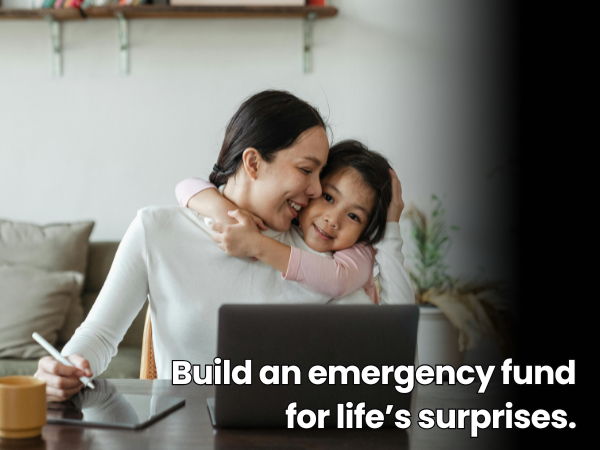
Share this Post
How to Build an Emergency Fund: A Financial Safety Net for New Families and First-Time Wealth Builders
Here's the truth: accidents don't wait until you're ready. They show up uninvited — a popped tire, a car accident, a trip to the ER — all stressful events that can derail our lives.
An emergency fund minimizes the damage and gives you security during bad situations.
Whether you're a young couple balancing rent and daycare or a first-time wealth builder working toward stability, this fund is your financial safety net.
What Is an Emergency Fund?
An emergency fund is a reserve (preferably cash or some type of cash equivalent) for unexpected expenses like medical bills, car repairs, or job loss. Unlike your retirement savings or investment accounts, this money should be safe, easy to access, and low-risk. Think of it as your financial buffer, giving you peace of mind when life throws the unexpected your way.
Below, we'll go into a few cash-equivalent options to consider for your emergency fund.
Why An Emergency Fund Matters for First-Time Wealth Builders
For new families and individuals who are just beginning to manage their own finances, an emergency fund provides flexibility and security. Without one, a single unexpected expense can derail your entire budget or lead to high-interest debt.
Having a financial cushion means:
- You don't have to rely on credit cards in a crisis
- You can stay on track with long-term financial goals
- You gain confidence and reduce financial stress
How Much Should You Save In An Emergency Fund?
A good rule of thumb is to aim for 6 months of living expenses. If you're just starting out, that might sound intimidating. Start small. Even $500 to $1,000 can cover many common emergencies and is a strong first step. Start gradually, building up one month at a time until you can reach a 6-month emergency fund.
Consider:
- Monthly rent or mortgage
- Utilities and groceries
- Transportation
- Childcare and healthcare costs
When your income isn’t guaranteed or you’re the sole provider, there’s more at stake. If you're self-employed or in a single-income household, consider building a greater emergency fund that gives you breathing room during slow months, unexpected gaps in work, or major life events like a medical emergency or family need.
Where Should You Keep Your Emergency Fund?
Your emergency fund should be accessible but separate from your everyday checking account.
- High-yield savings accounts (for easy access and better interest rates)
- Money market accounts (for higher balances with limited check writing)
Avoid investing your emergency fund in stocks or retirement accounts. This money needs to be safe and ready to use.
How to Start Saving For Your Emergency Fund?
If you're starting from scratch, focus on consistency over perfection. Building an emergency fund is a habit, not a one-time action.
- Set a Monthly Goal: Start with an amount you can afford—even if it's $25 or $50 per month. Small amounts add up.
- Automate It: Treat savings like a bill. Set up automatic transfers to your emergency fund right after payday.
- Use Windfalls Wisely: Tax refund? Bonus? Side hustle income? Allocate a portion to your emergency fund before spending.
Common Mistakes to Avoid
- Using your fund for non-emergencies: A sale at Target doesn't count.
- Keeping it too accessible: Avoid temptation by separating it from daily-use accounts.
- Waiting for "extra money" to save: Start now, even with small amounts.
Final Thoughts: Your Emergency Fund Is Step One
Before you invest, before you buy a house, and before you chase financial freedom, you need a financial safety net. Your emergency fund is that first, essential step toward financial security.
For more tools and guidance built for new families and first-time wealth builders, visit ConfianzaWealth.com or follow us on Instagram @wealthwithjerry.
